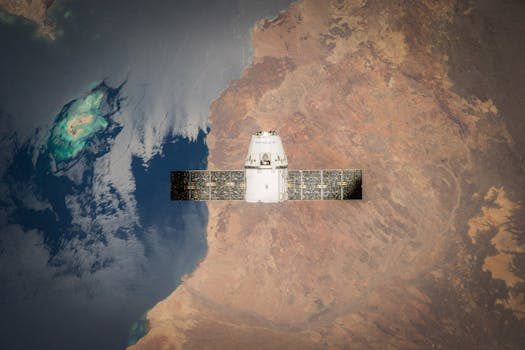Orbiting Innovations: Exploring the Latest in Earth-Observing Technology

Orbiting Innovations: Exploring the Latest in Earth-Observing Technology
Orbiting innovations are at the forefront of Earth-observing technology, providing scientists with unparalleled views of our planet. Earth-observing technology has come a long way since the launch of the first weather satellites in the 1960s. Today, a fleet of satellites in orbit around the Earth is providing a wealth of information about the planet’s systems and processes. From monitoring climate change to tracking natural disasters, Earth-observing technology is playing a vital role in helping us understand and protect the planet.
History of Earth-Observing Technology
The history of Earth-observing technology dates back to the 1960s, when the first weather satellites were launched. These early satellites were designed to provide basic weather forecasting capabilities, but they paved the way for the development of more advanced Earth-observing technologies. In the 1970s and 1980s, satellites such as Landsat and SPOT were launched, providing higher-resolution images of the Earth’s surface. These satellites were used for a variety of applications, including land use mapping, crop monitoring, and disaster response.
Current State of Earth-Observing Technology
Today, Earth-observing technology is more advanced than ever before. Satellites such as NASA’s Terra and Aqua satellites are providing high-resolution images of the Earth’s surface, while satellites such as the European Space Agency’s Envisat and the Canadian Space Agency’s RADARSAT-2 are providing detailed information about the planet’s oceans, land surfaces, and atmosphere. The use of constellations of small satellites, such as Planet Labs’ Dove satellites, is also becoming increasingly popular, providing frequent and high-resolution images of the Earth’s surface. These satellites are being used for a variety of applications, including monitoring crop health, tracking deforestation, and detecting natural disasters.
Applications of Earth-Observing Technology
Earth-observing technology has a wide range of applications, from monitoring climate change to tracking natural disasters. Satellites such as NASA’s Orbiting Carbon Observatory are providing critical information about the Earth’s carbon cycle, while satellites such as the European Space Agency’s Swarm mission are helping to understand the Earth’s magnetic field. Earth-observing technology is also being used to monitor and respond to natural disasters, such as hurricanes, wildfires, and earthquakes. For example, satellites such as NASA’s Landsat 8 and the European Space Agency’s Sentinel-2 are providing critical information about the extent and impact of natural disasters, helping emergency responders to respond more effectively.
Conclusion
In conclusion, orbiting innovations are at the forefront of Earth-observing technology, providing scientists with unprecedented views of our planet. From monitoring climate change to tracking natural disasters, Earth-observing technology is playing a vital role in helping us understand and protect the planet. As the technology continues to evolve, we can expect to see even more innovative applications of Earth-observing technology in the future.